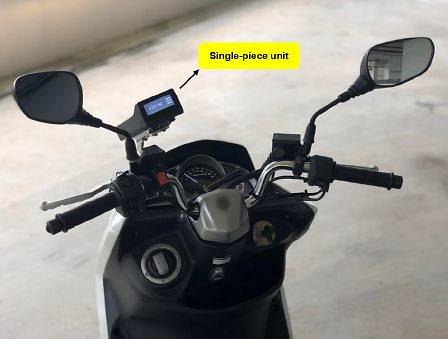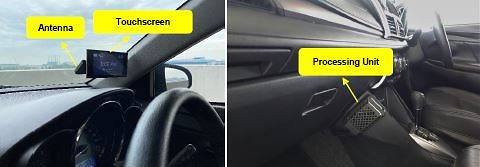SINGAPORE: Transport Minister Ong Ye Kung on Thursday (Sep 10) spoke about the new Electronic Road Pricing (ERP) on-board units (OBUs) that will be rolled out to Singapore-registered vehicles in 2021, citing “quite a number of feedback and questions” since the units were announced earlier this week.
The OBUs will be used when Singapore switches to the next-generation ERP system – based on the Global Navigation Satellite System – in mid-2023. This replaces the gantry system, which is more than 20 years old.
Existing Singapore-registered vehicles will receive their first OBU for free and it will replace the current in-vehicle units in an installation exercise starting in the second half of next year.
READ: New ERP units to be installed from second half of 2021; no change yet to congestion pricing framework
In a Facebook post, Mr Ong addressed the top seven questions about the OBU.
WHY THE NEED FOR A THREE-PIECE OBU FOR CARS?
For motorcycles, the OBU is a single-piece device designed to be mounted on the vehicle. However, all other vehicles will have a three-piece design installed, which includes an antenna and a touchscreen display attached to the windscreen. There is also a processing unit that can be mounted beneath the dashboard.

A new on-board unit on a motorcycle. (Photo: LTA)
Mr Ong said that while “technically there is no problem having an integrated unit”, “the issue is heat”.
“From time to time, we park our cars under the hot sun and a processing unit on the dashboard could not function without a big cooling unit. Hence, the contractor designed it to be a separate module under the dashboard, instead of making it part of a much larger integrated OBU on the dashboard,” said the minister.
WHY IS THE OBU WINDSCREEN UNIT SO BIG?
The photos of the OBU unit “might be a bit misleading”, Mr Ong said.
He clarified that the dimensions of the windscreen unit are 152mm by 80mm, compared to the current in-vehicle unit (IU), which measures 121mm by 78mm, making the new unit “only slightly bigger”.
“We will be doing consultation with workshops soon and will discuss how best to install the new units so that it minimises blockage of the windscreen,” he said.
READ: The new tech driving traffic on Singapore’s roads
USING THE OBU FOR NAVIGATION
Other than providing information on ERP charging locations and rates, the OBU will also provide real-time road traffic updates, as well as locations of nearby school zones and silver zones.
However, it was raised that some motorists would prefer using their phone to navigate the roads and that the new display unit would only be distracting.

The new on-board unit for all other types of vehicles that are not motorcycles. (Photo: LTA)
“We recognise that most motorists will still prefer to use their own navigation devices, but the display is a functionality that is useful to incorporate.
“Other than showing real-time ERP transaction information, LTA (Land Transport Authority) can use it to pump out other important traffic-related information when there is a need to. Best to provide it now so that other good uses can be incorporated in future,” said Mr Ong.
CAN I NOT HAVE THE DISPLAY?
“The display is standard issue,” said Mr Ong.
“We are also mindful that even if there is a simpler unit without display available, motorists may first choose the simpler unit and then want to change back to the unit with the display screen later as we will want to know how much is deducted, what’s the balance left,” he said, adding that this “always happens”.
CAN THE SMARTPHONE BE USED INSTEAD OF THE DISPLAY UNIT?
Another issue that was raised was the possibility of continuing to use the smartphone in place of the display unit, seeing as motorists can now pay their car park charges using their smart phone.
Mr Ong said this is a “possible future upgrade”, but that “to start the new system”, it is “better to have a standard issue”.
“Data security (was) a key consideration when we decided to on a standard issue instead of using our individual smartphones. Further, if we use our own smartphones for ERP, there will be operational issues like battery running out, forgetting to bring smartphones,” he said.
WHY IS THERE NO DISTANCE-BASED CHARGING?
While the new system is capable of utilising distance-based charging, “as a policy we are holding back”, said Mr Ong.
“As the system cuts over in 2023, it is much better to continue congestion pricing in a way that has been effective and motorists are used to,” he said.
“Distance-based charging is a significant policy change, which has many implications and should be studied carefully.”
WHY WAS THERE NO CONSULTATION ON THE DESIGN OF THE OBU?
Mr Ong said that LTA had some “practical constraints”.
“It called an international tender and various proposals came including this current one. LTA then had to choose the best system to replace the old ERP system. After that LTA is contractually bound.
“There can be consultations and change of design but it will affect the contract.
“We will have to see how to do this better next time,” he said.




